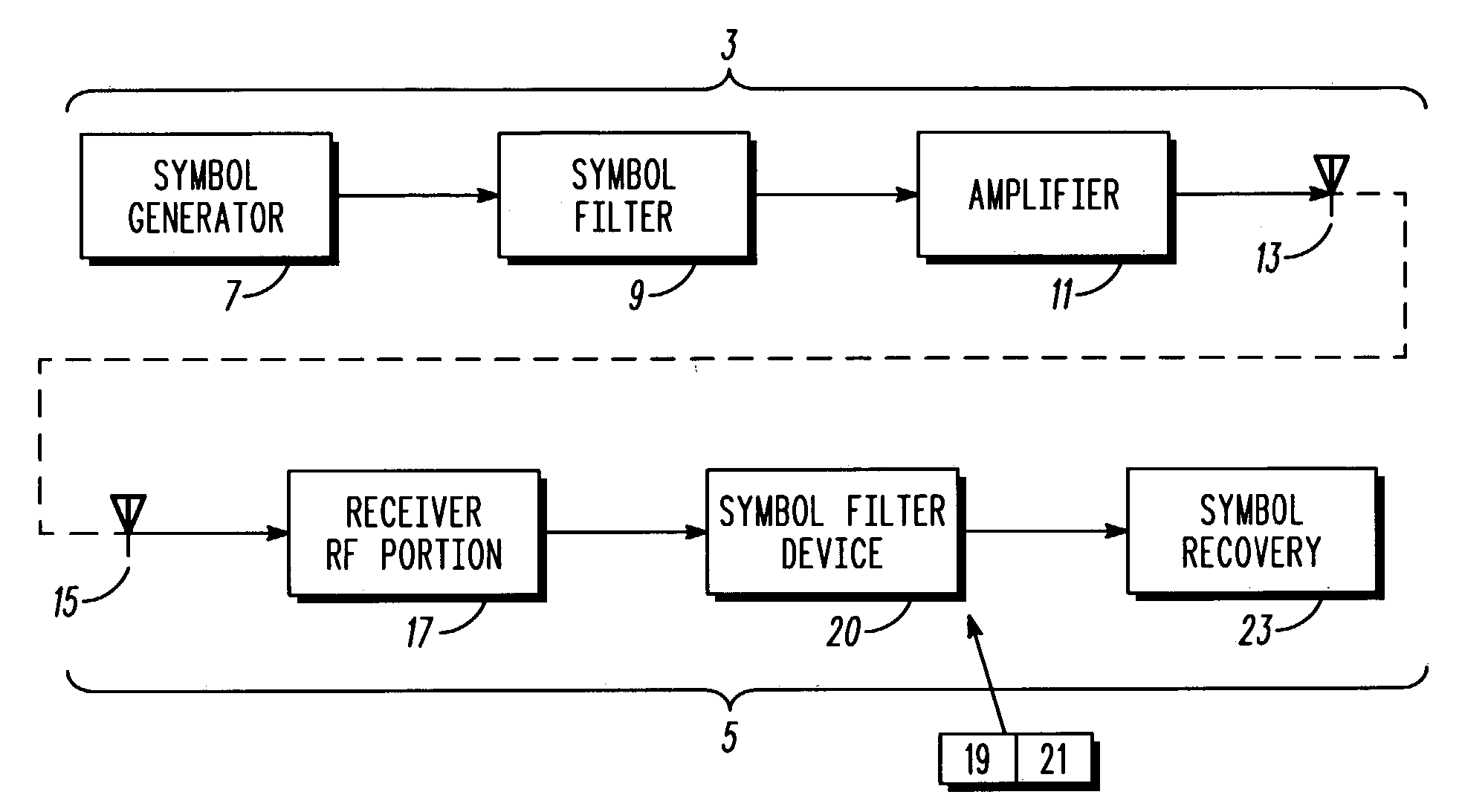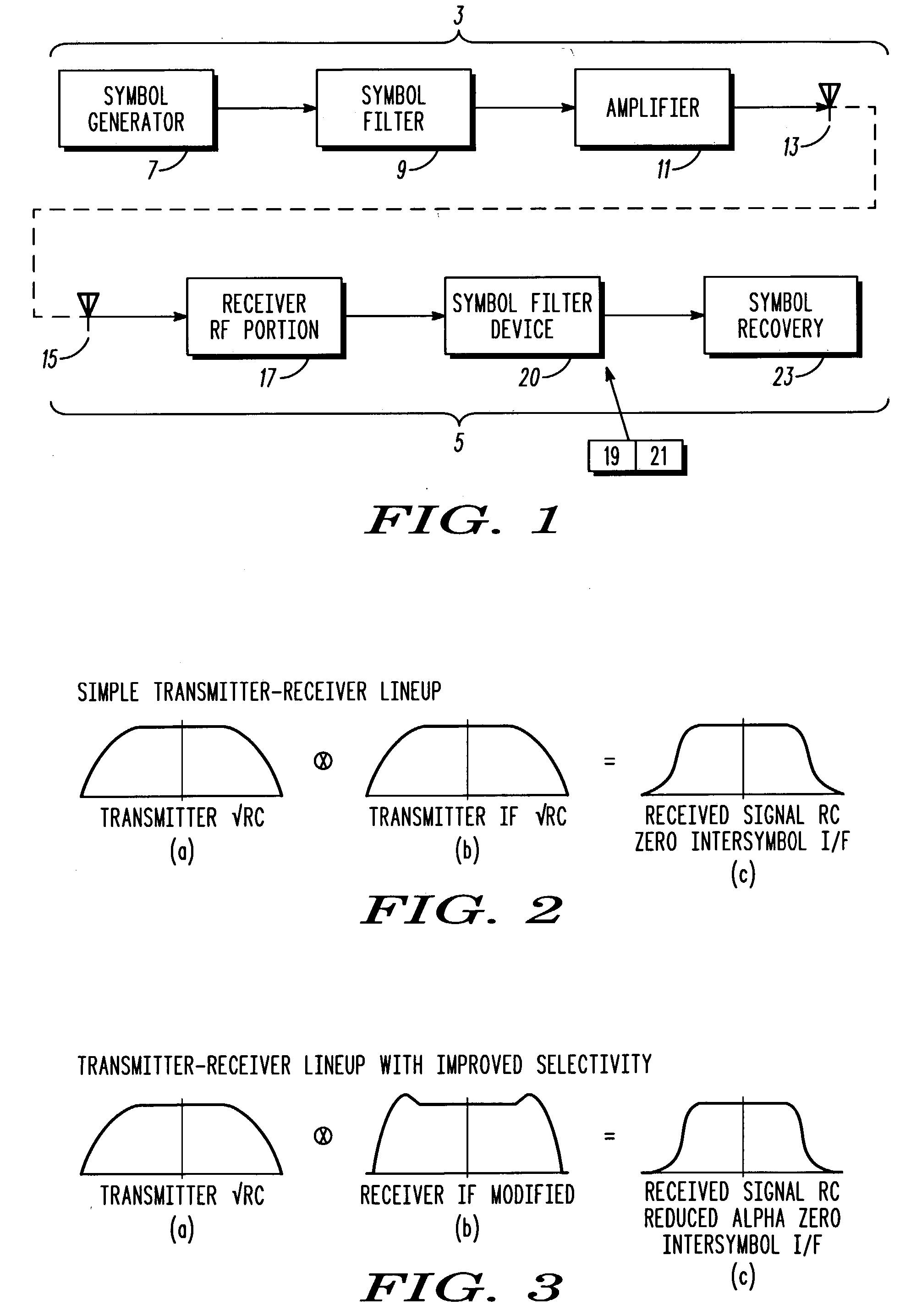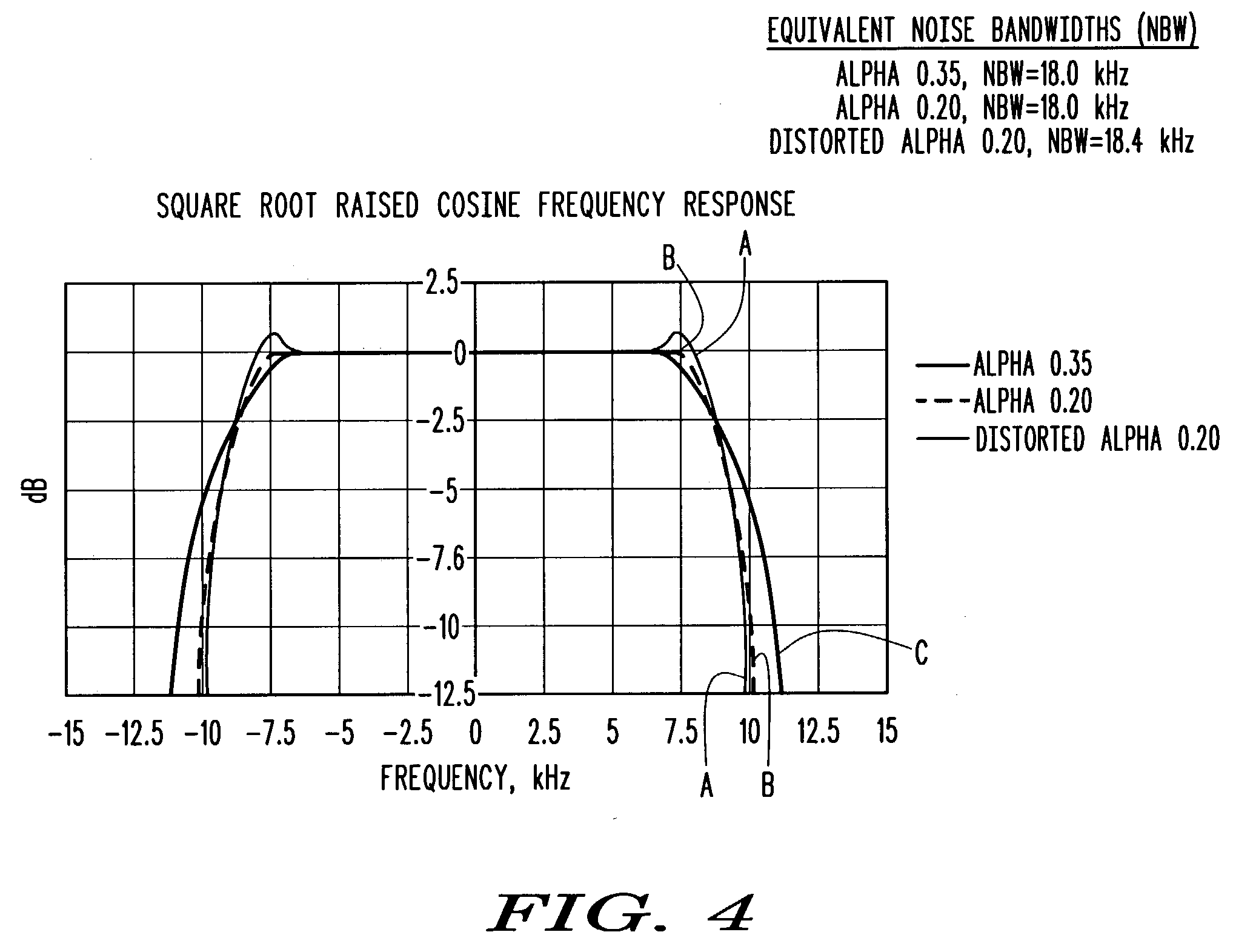Filters and their use in digital communications
- Summary
- Abstract
- Description
- Claims
- Application Information
AI Technical Summary
Benefits of technology
Problems solved by technology
Method used
Image
Examples
Embodiment Construction
[0034] As shown in FIG. 1, a digital communications system 1 includes a radio transmitter 3 and a radio receiver 5. The transmitter 3 includes a symbol generator 7, providing a signal comprising information-representin-g symbols which is filtered at an intermediate frequency (IF) by a symbol filter 9. The signal, which is provided as an output from the filter 9, is amplified by a RF power amplifier 11 and is sent as a radiated RF electromagnetic signal by an antenna 13 to one or more distant receivers. An antenna 15 of a distant receiver 5 picks up the signal from the antenna 13 of the transmitter 3. The signal is processed by a RF portion 17 of the receiver 5. An output of the RF portion 17 is filtered at IF by a filter device 20. The filter device 20 has a frequency response which corresponds to an example of the second response referred to earlier. For ease of understanding, the filter device 20 is shown as comprising a first symbol filter function 19 followed by a second symbol ...
PUM
 Login to View More
Login to View More Abstract
Description
Claims
Application Information
 Login to View More
Login to View More - R&D
- Intellectual Property
- Life Sciences
- Materials
- Tech Scout
- Unparalleled Data Quality
- Higher Quality Content
- 60% Fewer Hallucinations
Browse by: Latest US Patents, China's latest patents, Technical Efficacy Thesaurus, Application Domain, Technology Topic, Popular Technical Reports.
© 2025 PatSnap. All rights reserved.Legal|Privacy policy|Modern Slavery Act Transparency Statement|Sitemap|About US| Contact US: help@patsnap.com



